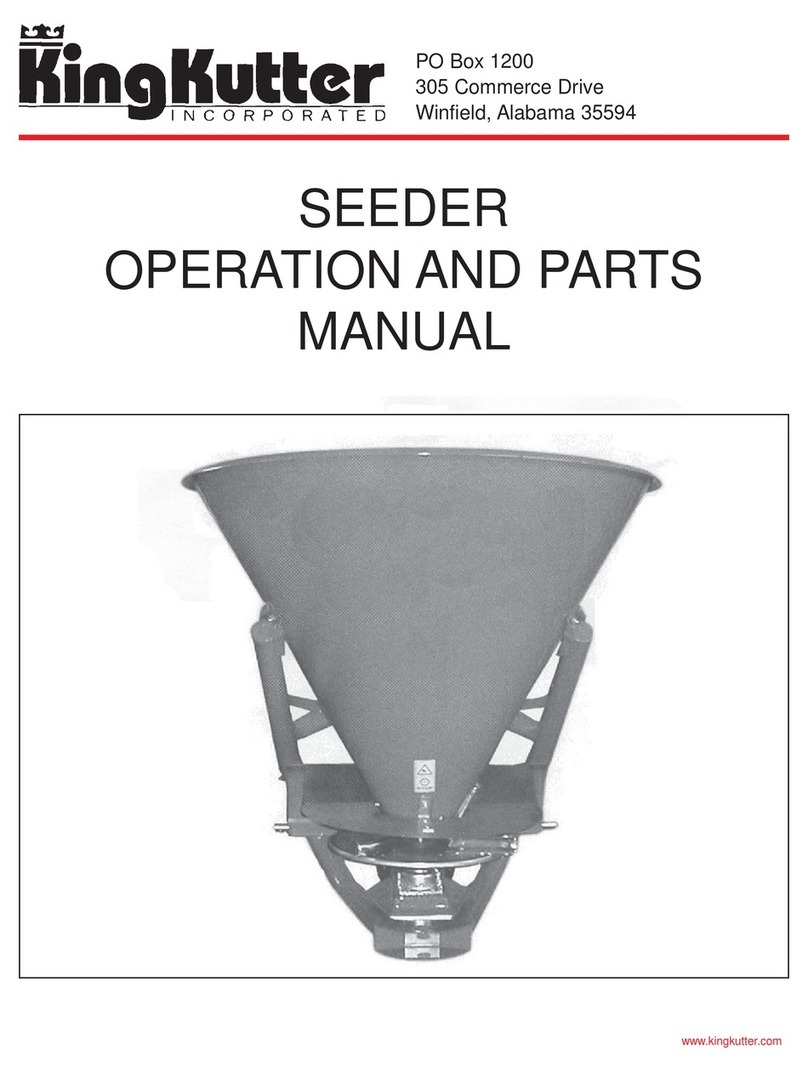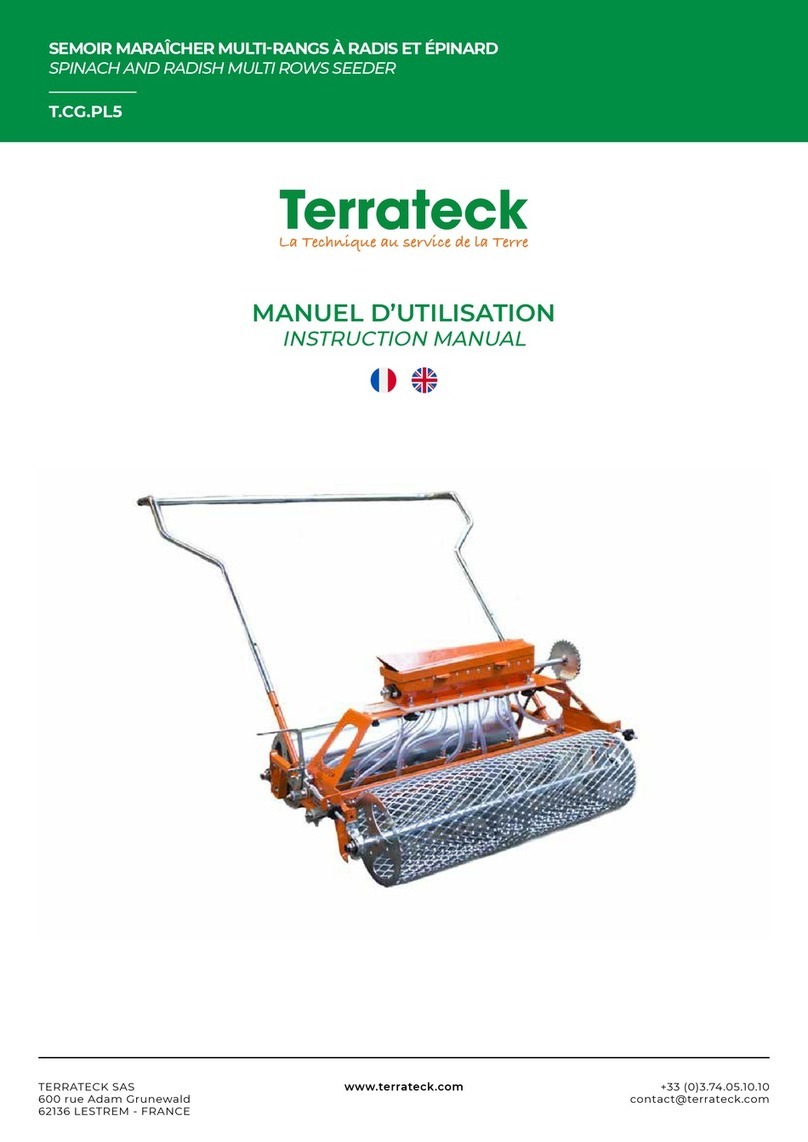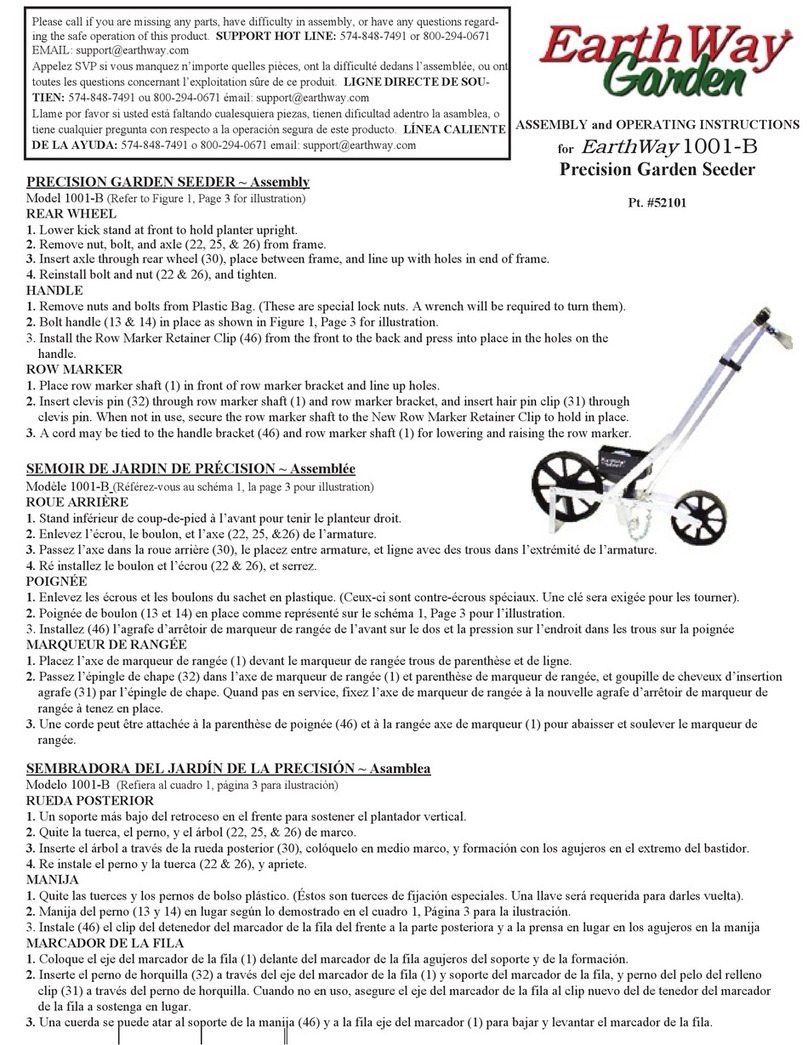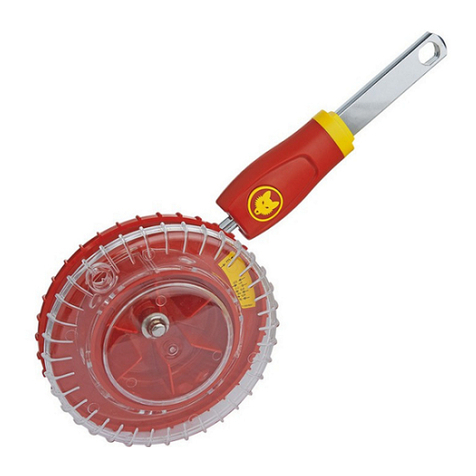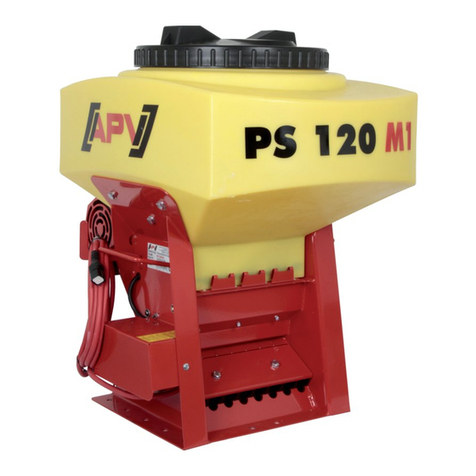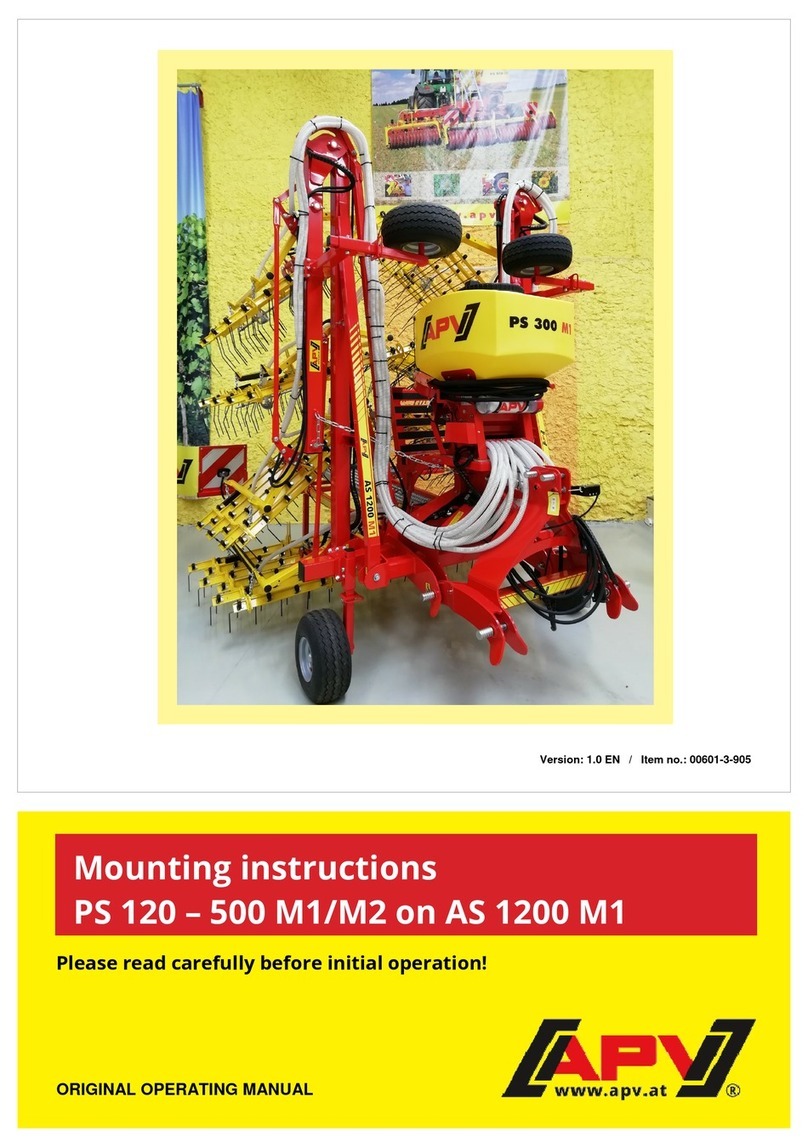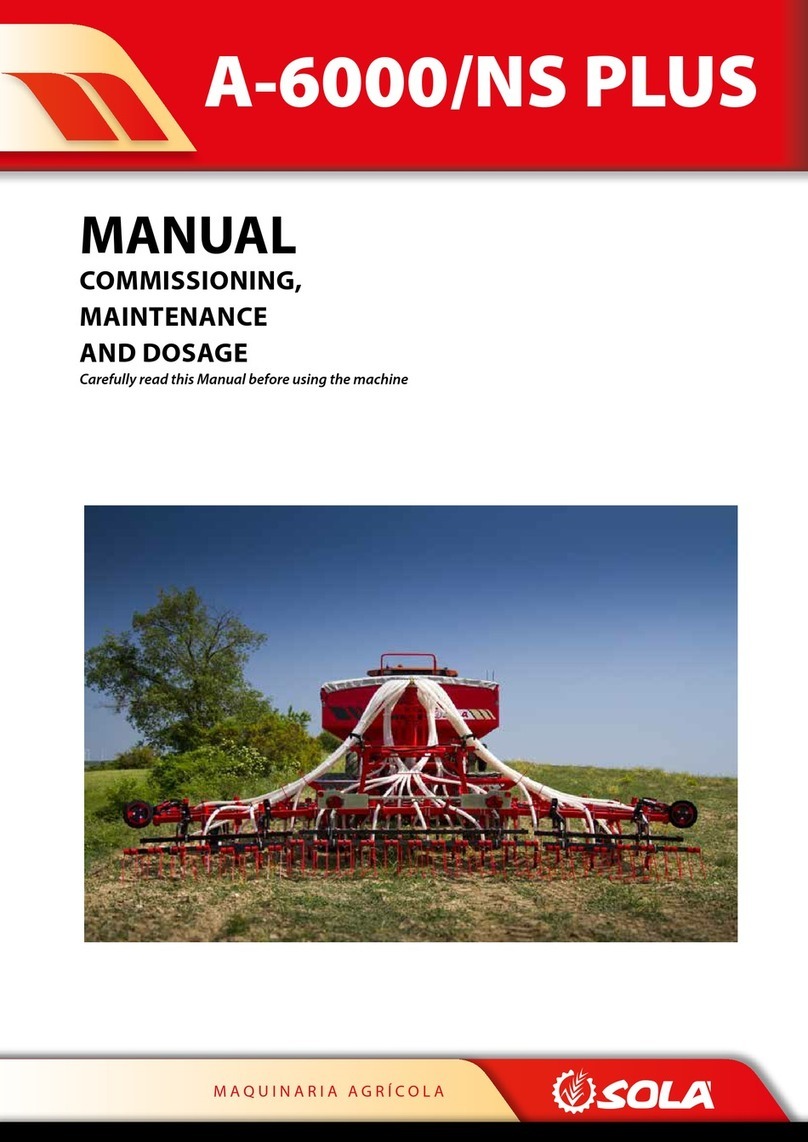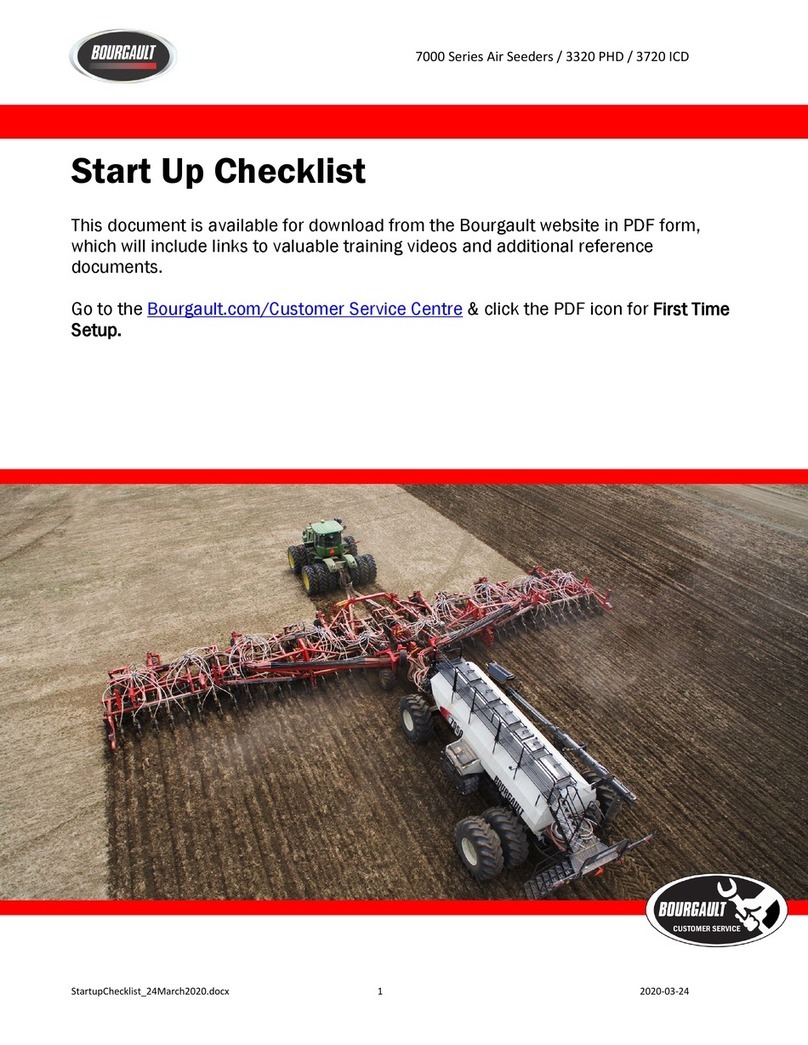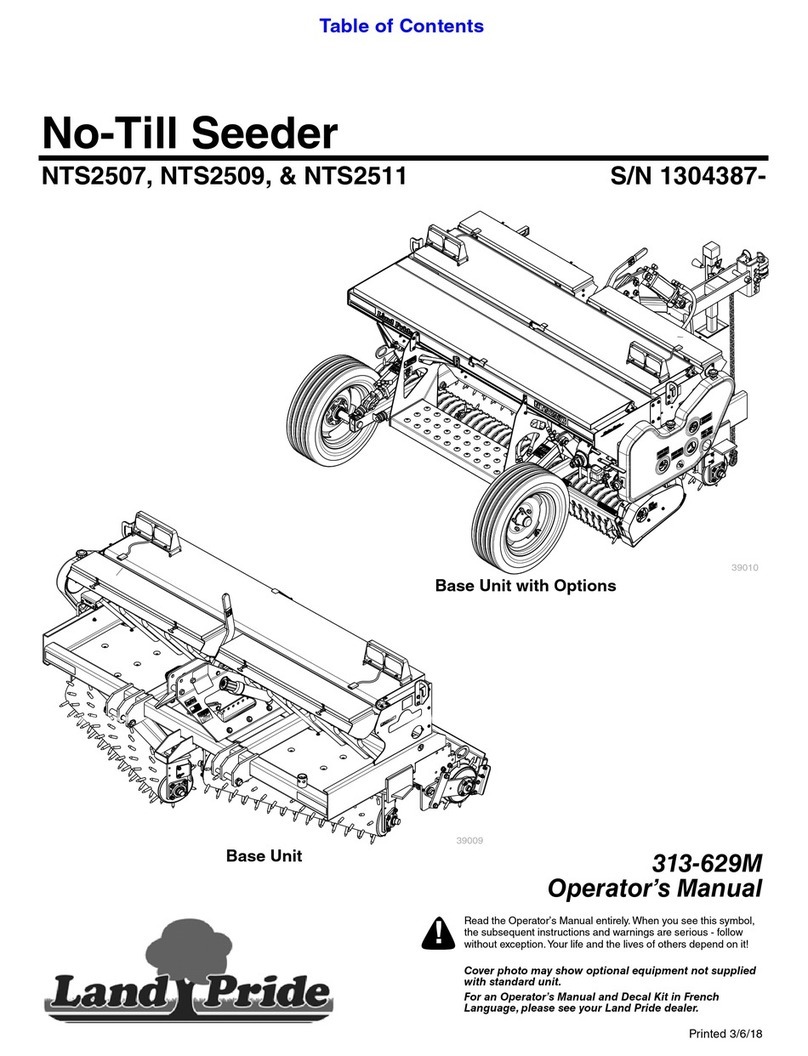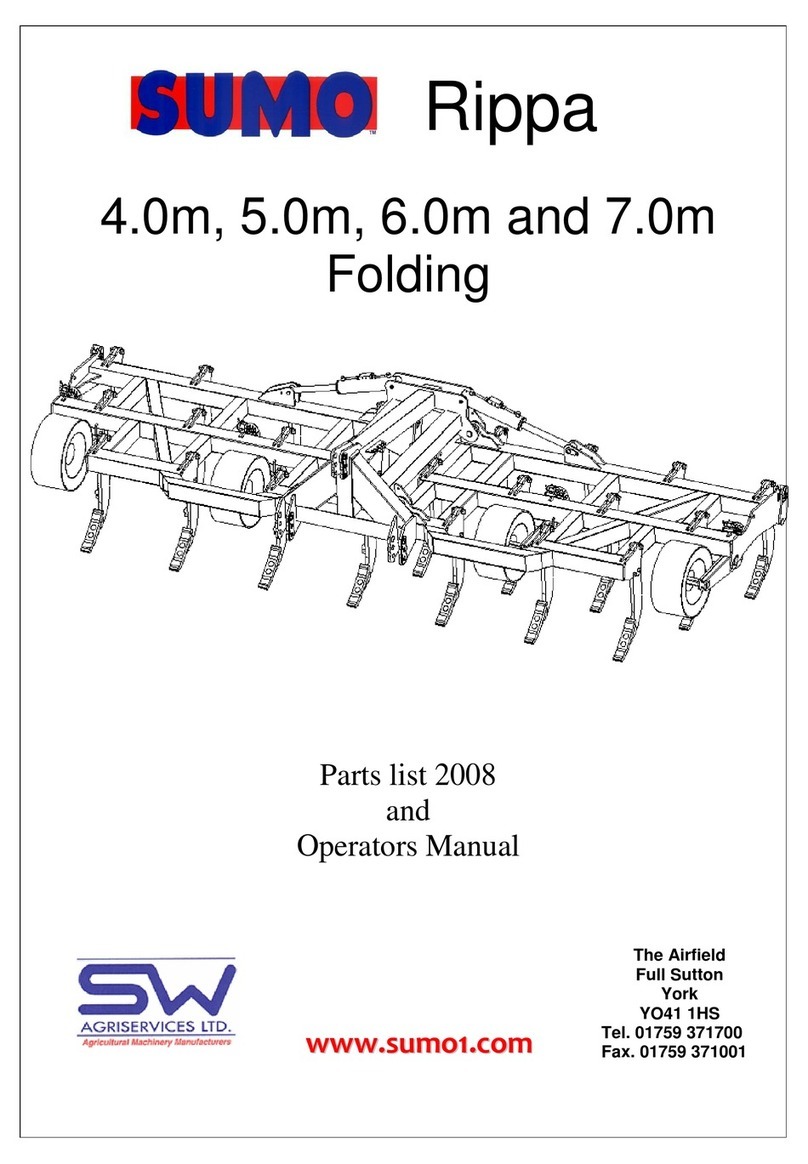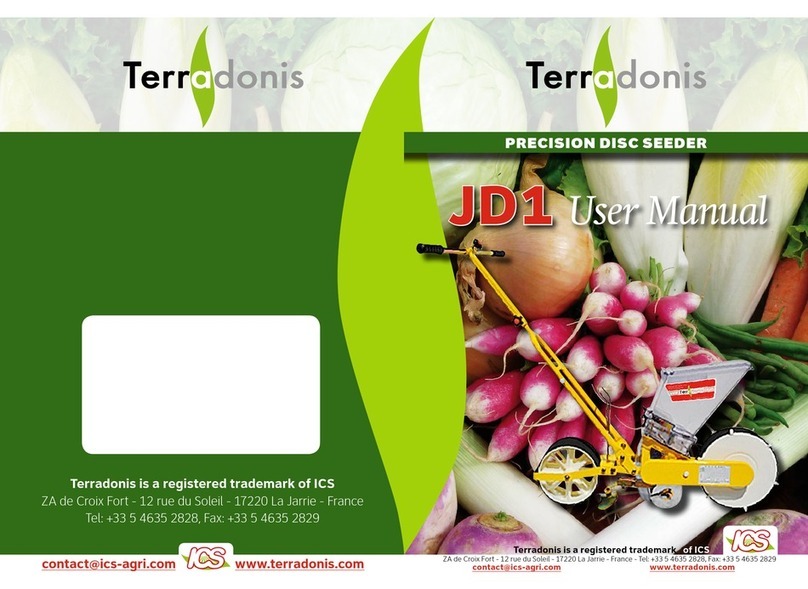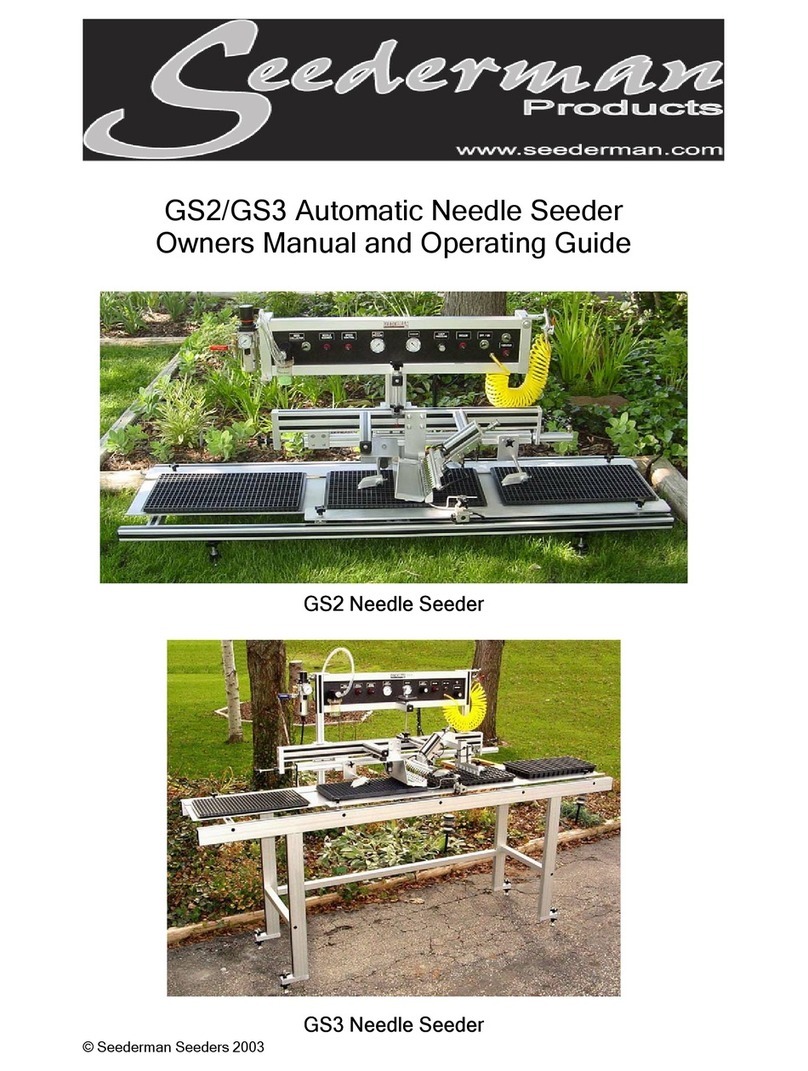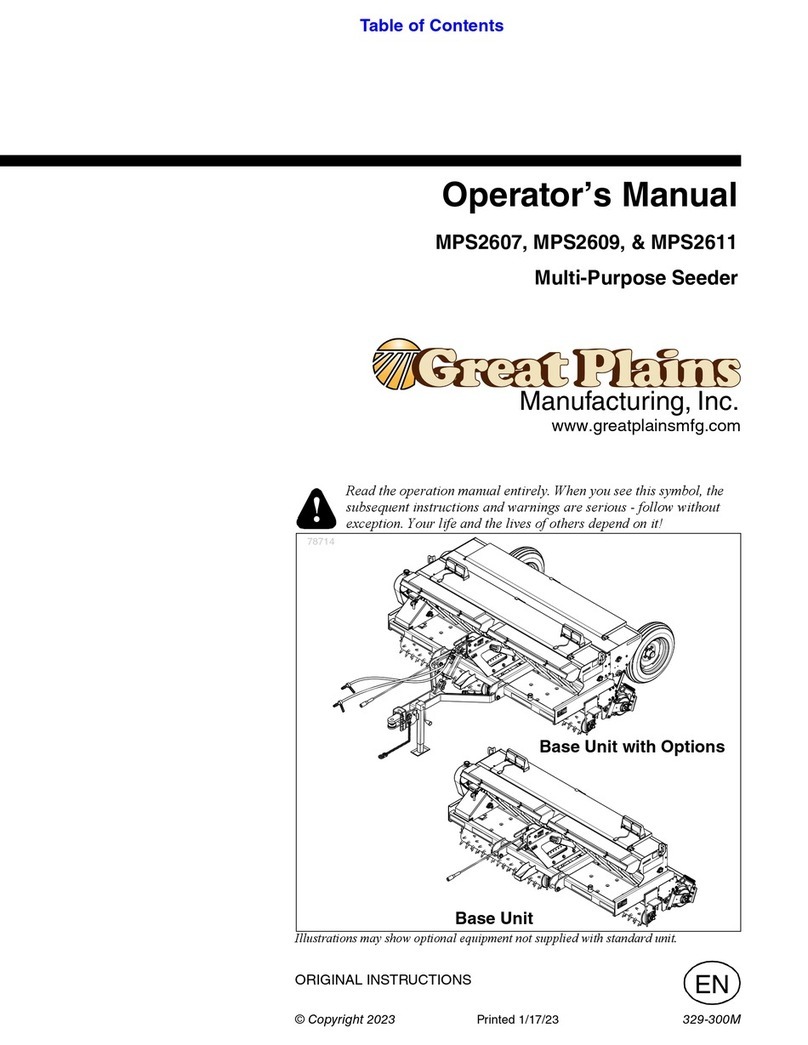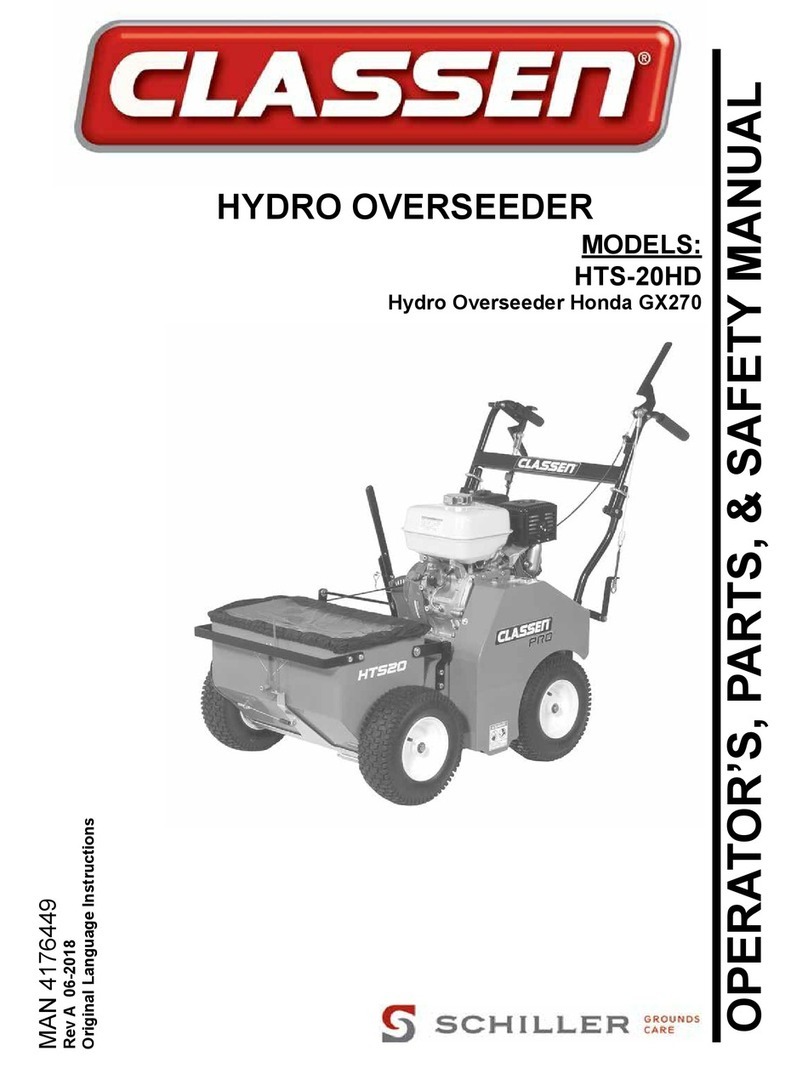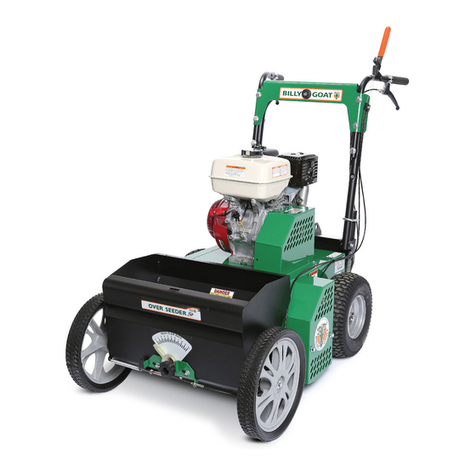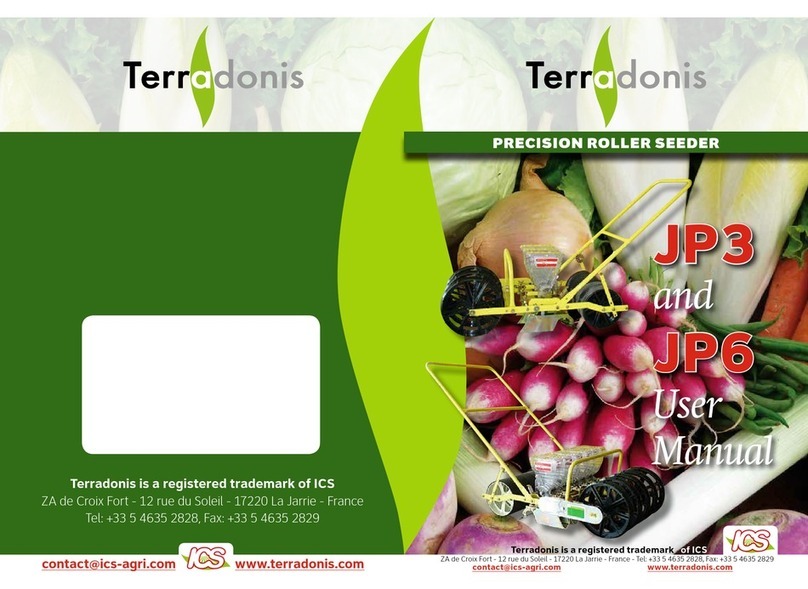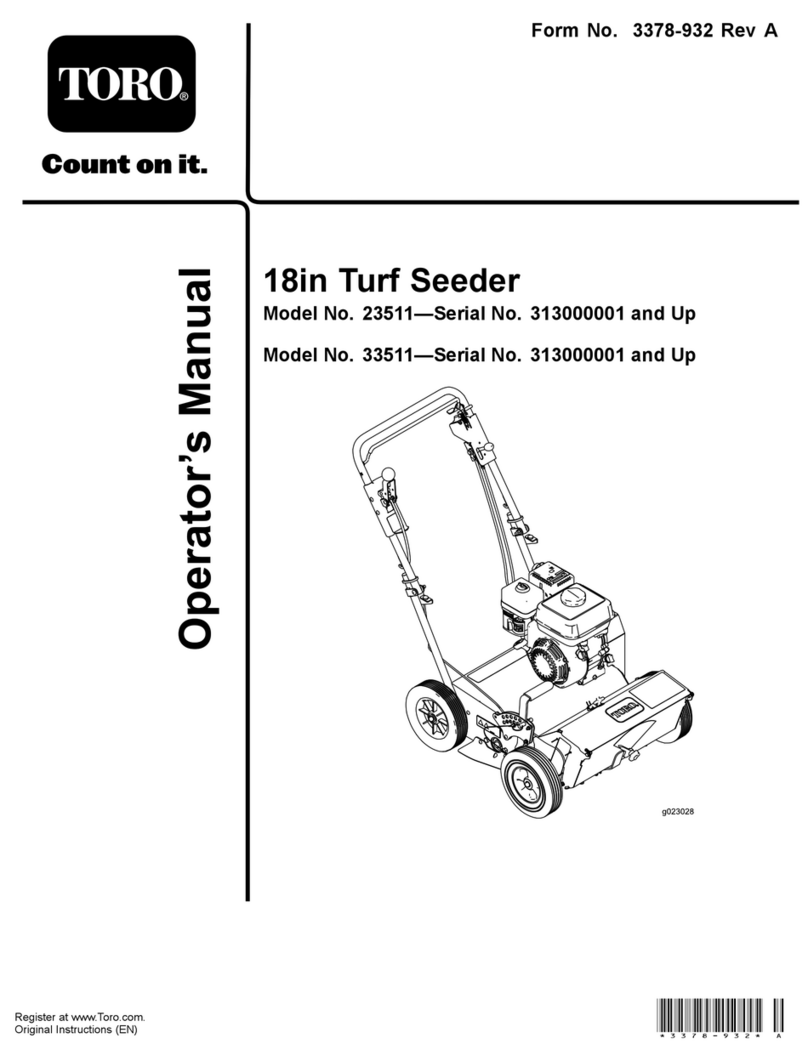
2
TABLE OF CONTENTS
1GENERAL.......................................................................................................................................4
1.1 About this operating manual.................................................................................................4
1.2 Identification of the implement..............................................................................................4
1.3 Service.................................................................................................................................5
1.4 EC Declaration of Conformity...............................................................................................5
2DESCRIPTION................................................................................................................................6
2.1 Layout and functioning of the seed drill................................................................................6
2.2 Layout and function of the hydraulic fan (HG 300 M1) .........................................................7
2.3 Scope of delivery .................................................................................................................8
2.4 Technical data .....................................................................................................................8
3SAFETY..........................................................................................................................................9
3.1 Safety instructions in this document.....................................................................................9
3.2 Basic safety regulations.....................................................................................................10
3.3 Intended use......................................................................................................................11
3.4 Personnel requirements.....................................................................................................11
3.5 Personal protective equipment...........................................................................................11
3.6 Safety devices ...................................................................................................................12
3.7 Dangers and safety measures ...........................................................................................13
4TRANSPORT, INSTALLATION AND COMMISSIONING.............................................................15
4.1 Attaching the seed drill to a soil tillage implement..............................................................15
4.2 Attaching the seed drill to a tractor.....................................................................................16
4.3 Installing the dispersion plates on the soil tillage implement...............................................17
4.4 Connecting the hoses........................................................................................................18
4.5 Removing the swell air plate ..............................................................................................19
4.6 Connecting the hydraulic fan (HF)......................................................................................20
4.7 Connecting the electric fan PLUS ......................................................................................21
5OPERATION.................................................................................................................................22
5.1 Setting the hydraulic fan (HF).............................................................................................22
5.2 Setting and adjusting the spread rate.................................................................................24
5.3 Regulating the seed flow rate (calibration test)...................................................................24
5.4 Selecting the right seeding shaft........................................................................................25
5.5 Changing the seeding shaft ...............................................................................................26
5.6 Checking the ease of motion of the seeding shaft..............................................................28
5.7 Setting the brush pressure.................................................................................................29
5.8 Filling the seed hopper.......................................................................................................29
5.9 Deactivating the agitator ....................................................................................................30
5.10 Display on the motor module..............................................................................................31
6FAULT INDICATIONS ..................................................................................................................32
6.1 Fault overview....................................................................................................................32
7CLEANING, MAINTENANCE, AND REPAIRS.............................................................................33
7.1 Disconnecting the seed drill from the power supply............................................................33
7.2 Emptying the seed hopper.................................................................................................34
7.3 Cleaning the seed drill........................................................................................................34
7.4 Checking the hydraulic hoses ............................................................................................35
7.5 Repairs and service...........................................................................................................35
